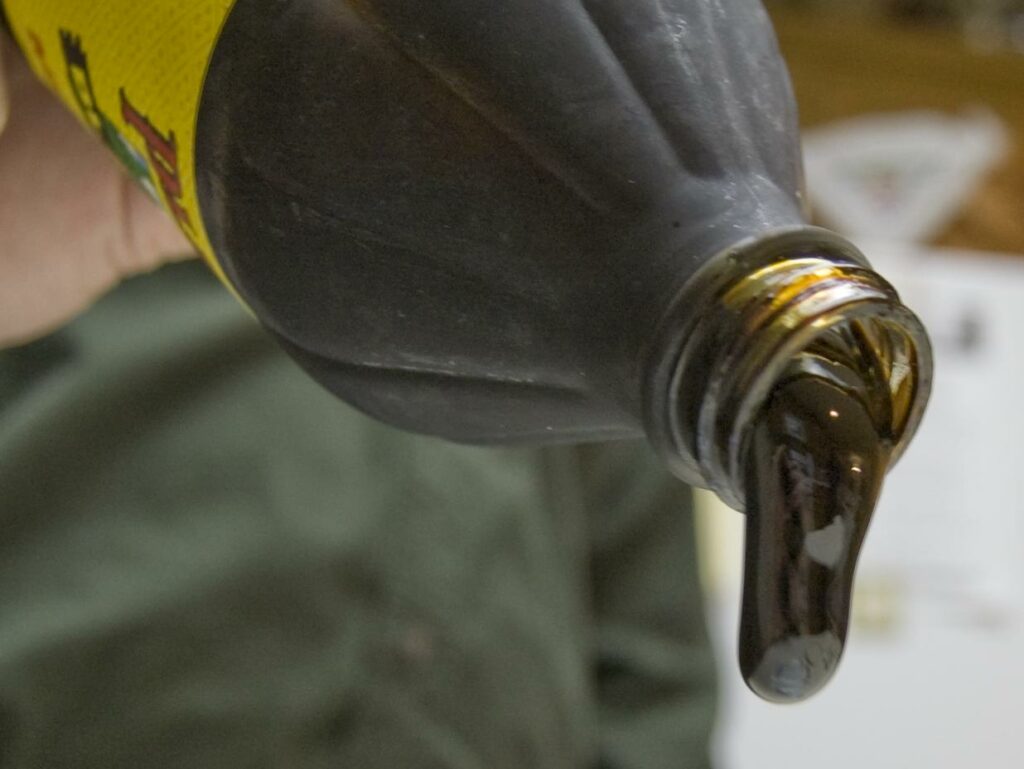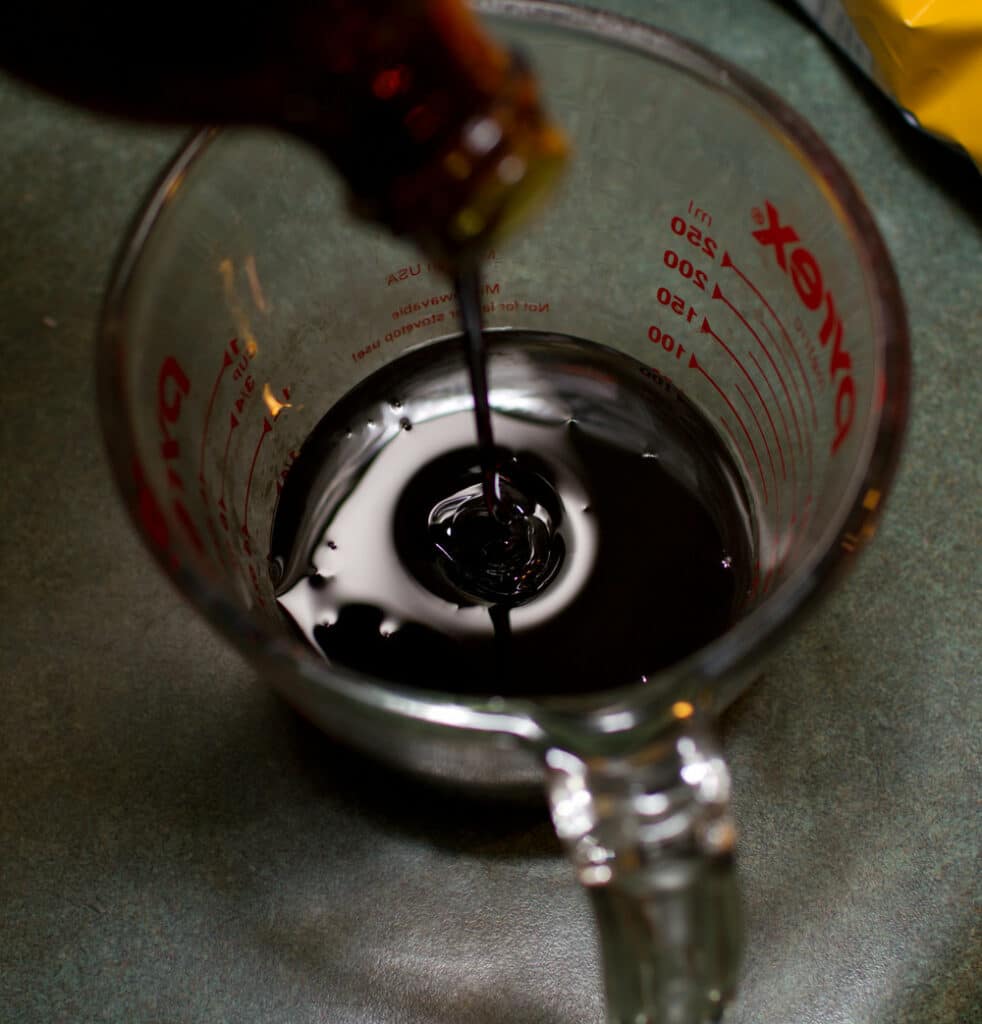
Molasses is a thick sweet sugary substance made from sugarcane or beets. While it’s not the tastiest, it is a great source of nutrients and minerals such as iron, selenium, and copper. While it’s not uncommon to see molasses in households, it’s not one of those items that you draw for regularly.
Because of its limited use, you could have unfinished molasses sitting in your cupboard for years. Which leads to the natural question of how long molasses remains edible. Continue reading below as we explore this topic.
Does Molasses Go Bad?

This is a tricky question, because technically pure molasses will last for years on end without going bad, if it’s stored in an ideal environment. If stored improperly, however, then molasses can go bad in a matter of days.
Why Does Molasses Go Bad?
Exposure to the elements is the usual culprit. Specifically, air and moisture will hasten the spoilage of molasses. In addition, extreme heat or variations in the temperature from one extreme to another will cause molasses to break down.This means that an airtight seal and a consistent location are key to storing molasses.
How To Tell Molasses is Bad/Spoiled?
There are a number of checks that can be done to determine whether or not the molasses sitting in the corner of your cupboard is still edible. See a few explained below.
The Taste Test
Generally, molasses has a slightly sweet and somewhat smoky flavor. Molasses that has gone bad will taste bitter or have a noticeable off taste. If you taste the molasses and notice anything apart from the usual smoky sweet flavor, then you should not consume it.
The Appearance Test
When it comes to appearance, one of the most popular things that happens with molasses is the growth of mold. Mold spores are a definite sign of spoilage. Mold grows when the molasses is exposed to water or humidity due to improper storage.
Another thing to look for with molasses is separation. The particles in molasses will begin to break down if it is stored in high heat. This will lead to separation of the molasses, causing it to look watery in some parts and dark in others. When this happens you should discard and buy a new jar.
The final thing to look out for with old molasses is crystallization. Crystallization is common with molasses that has been stored for a very long time, and happens when the product begins to lose its moisture. While crystallized molasses is not in itself unsafe, it is generally unsuitable for use in most recipes.
Does Molasses Need to Be Refrigerated After Opening?
No, molasses’ low water content makes it relatively shelf stable. While refrigeration technically is not necessary, it can prove to be beneficial. That is, if you do not have anywhere else that is constant in temperature to store the product, then you can stick it in the refrigerator.
How Long Does Molasses Last?
There is no precise answer to the question of molasses’ lifespan. While manufacturers will place a best by date on the product, it can spoil before that date or it can last several years past that time.
The quality of the product generally diminishes over time, as with most things, but five-year-old molasses can be just as good as a one-year-old bottle if you store it properly, taking into account the factors that cause spoilage.
So, how do you prevent or delay inevitable spoilage? Check out tips for storage in the next chapter.
Best Ways to Store Molasses So It Doesn’t Go Bad
Below are a couple tips that can be used to extend the shelf life of molasses, so it doesn’t spoil and go bad.
Store in a Dark Place
Molasses requires constant temperature and low humidity. Exposure to the elements should be avoided at all costs. As such, a cool cabinet, tucked away kitchen shelf or a pantry are usually ideal locations.
Areas close to your stove, window or door are not ideal and should be avoided.
Avoid Repackaging
While you might have a valid reason for wanting to transfer molasses from the store bought container, doing so is not recommended. During the transfer process, the molasses could be introduced to bacteria or mold spores which could cause spoilage. A container that appears clean to the naked eye could be a haven for harmful pathogens.
Also, you should always ensure that any utensils you dip into the molasses are clean to avoid introducing bacteria to the product.
Risks of Consuming Spoiled Molasses
As earlier mentioned, mold is the most common cause of spoilage with molasses. If you consume molasses that was contaminated with mold spores, it could cause mild illness, or it could cause severe symptoms depending on the type of mold. Symptoms could be even more dangerous if you have a mold allergy.
Persons with mold allergy could experience sneezing, runny or stuffy nose, itchy eyes, nose and throat, watery eyes and more seriously trouble breathing.
If you consume molasses that has just gone bad overtime, then you could have mild symptoms such as a stomach ache, nausea or even vomiting.
Wrapping it up
As a rule of thumb, when in doubt throw it out. Before you throw it out, however, ensure that you engage in a series of tests to see that the product is truly past using.
Remember, molasses can last a really long time, in fact several years past its expiry date. Molasses is not something you want to be buying everyday, so store it properly, and remember to practice good hygiene while using the product to avoid contamination from other particles or foods.